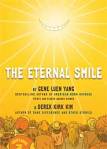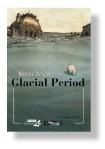A few more items from my recent travels that didn’t quite fit into the Flipped purview:
 Pride and Prejudice and Zombies: The Classic Regency Romance – Now with Ultraviolent Zombie Mayhem! by Jane Austen and Seth Grahame-Smith, Chronicle Books. As the blurb claims, “Complete with romance, heartbreak, swordfights, cannibalism, and thousands of rotting corpses, Pride and Prejudice and Zombies transforms a masterpiece of world literature into something you’d actually want to read.” I’m not sure if Jane Austen really benefits from the addition of zombies to her prose (unless they’re mall zombies), but zombie stories sure benefit from the presence of Miss Bennett and Mister Darcy. The insertion of “the unmentionables” is definitely good for a few fresh chuckles, and the fusion is surprisingly fluid. It’s also great airplane reading; I’m the kind of person who likes to unnerve my seatmates with intermittent giggling. The joke doesn’t get stale by book’s end, but if Grahame-Smith envisions a franchise, he should probably pace himself.
Pride and Prejudice and Zombies: The Classic Regency Romance – Now with Ultraviolent Zombie Mayhem! by Jane Austen and Seth Grahame-Smith, Chronicle Books. As the blurb claims, “Complete with romance, heartbreak, swordfights, cannibalism, and thousands of rotting corpses, Pride and Prejudice and Zombies transforms a masterpiece of world literature into something you’d actually want to read.” I’m not sure if Jane Austen really benefits from the addition of zombies to her prose (unless they’re mall zombies), but zombie stories sure benefit from the presence of Miss Bennett and Mister Darcy. The insertion of “the unmentionables” is definitely good for a few fresh chuckles, and the fusion is surprisingly fluid. It’s also great airplane reading; I’m the kind of person who likes to unnerve my seatmates with intermittent giggling. The joke doesn’t get stale by book’s end, but if Grahame-Smith envisions a franchise, he should probably pace himself.
 Borderline, by Nevada Barr, Penguin Group. Perhaps it’s morbid of me or reflects some unflattering impulse towards vicarious violence, but I think any trip to a national park benefits from bringing along a murder mystery set in a national park. Barr’s intrepid heroine, law enforcement ranger Anna Pigeon, is actually visiting Big Bend National Park in Texas as a tourist. Her last adventure has left her on the verge of post-traumatic stress disorder (and on administrative leave), so her kindly husband decides a rafting trip would be an ideal distraction. The trip turns disastrous and deadly in short order, and Anna must face a hostile environment, untangle political complications, and confront her never-before-in-evidence maternal side (unless wolf pups count). As usual, the details of the story are much less important than Barr’s gift for communicating glorious settings. Equally important is her portrayal of Anna, almost as antisocial and sometimes as feral as the predators who roam the far corners of her beloved parks. She’s more than a match for the human predators who sully those parks with greed and violence. Aside from the settings, I think the thing I like best about this series is that Anna’s career as a ranger is the second act of her life, not a from-birth calling; there’s something deeply satisfying about a character finding that satisfaction later than you might expect, but still basking in it.
Borderline, by Nevada Barr, Penguin Group. Perhaps it’s morbid of me or reflects some unflattering impulse towards vicarious violence, but I think any trip to a national park benefits from bringing along a murder mystery set in a national park. Barr’s intrepid heroine, law enforcement ranger Anna Pigeon, is actually visiting Big Bend National Park in Texas as a tourist. Her last adventure has left her on the verge of post-traumatic stress disorder (and on administrative leave), so her kindly husband decides a rafting trip would be an ideal distraction. The trip turns disastrous and deadly in short order, and Anna must face a hostile environment, untangle political complications, and confront her never-before-in-evidence maternal side (unless wolf pups count). As usual, the details of the story are much less important than Barr’s gift for communicating glorious settings. Equally important is her portrayal of Anna, almost as antisocial and sometimes as feral as the predators who roam the far corners of her beloved parks. She’s more than a match for the human predators who sully those parks with greed and violence. Aside from the settings, I think the thing I like best about this series is that Anna’s career as a ranger is the second act of her life, not a from-birth calling; there’s something deeply satisfying about a character finding that satisfaction later than you might expect, but still basking in it.
 The Eternal Smile, by Gene Luen Yang and Derek Kirk Kim, First Second. For me, this perfectly pleasant collection of thematically linked short stories suffered in the shadow of high expectations. Yang’s American Born Chinese and Kim’s Same Difference and Other Stories are terrific, terrific graphic novels, so the prospect of a collaboration between their creators left me anticipating a result that could heal minor ailments and spin gold from straw. The actual result offers three tales exploring fantasy’s shortcomings as an alternative to the real world. There’s nothing bad about any of them, though they feel a bit pat and maybe even a bit preachy at times. It’s a distinct pleasure seeing Kim demonstrate his versatility as an illustrator, though.
The Eternal Smile, by Gene Luen Yang and Derek Kirk Kim, First Second. For me, this perfectly pleasant collection of thematically linked short stories suffered in the shadow of high expectations. Yang’s American Born Chinese and Kim’s Same Difference and Other Stories are terrific, terrific graphic novels, so the prospect of a collaboration between their creators left me anticipating a result that could heal minor ailments and spin gold from straw. The actual result offers three tales exploring fantasy’s shortcomings as an alternative to the real world. There’s nothing bad about any of them, though they feel a bit pat and maybe even a bit preachy at times. It’s a distinct pleasure seeing Kim demonstrate his versatility as an illustrator, though.





Weekend reading
Aside from the strong third volume of Naoki Urasawa’s Pluto (Viz), my weekend’s reading ran towards the inoffensively pleasant.